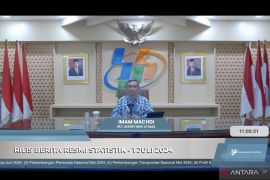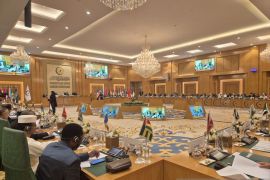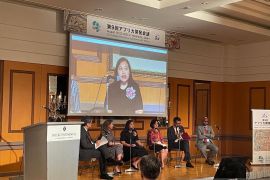The poor population in the country in the period was recorded at 28.59 million or 11.66 percent of the total population, down from 29.13 million in the same period a year earlier, BPS chief Suryamin said.Jakarta (ANTARA News) - The number of poor population in Indonesia drops by 0.54 million or 540,000 until September 2012, according to the National Statistic Agency (BPS).
The poor population in the country in the period was recorded at 28.59 million or 11.66 percent of the total population, down from 29.13 million in the same period a year earlier, BPS chief Suryamin said here on Wednesday.
Most of the drop occurred in villages reaching up to 400,000 or from 18.45 million in March to 18.08 million in September 2012, he said.
The number of urban poor slid only slightly by 140,000 from 10.65 million in March to 10.51 million in September 2012, he added.
"So, in terms of residences the number of the poor in both rural and urban areas has dropped in the period," he said.
Suryamin said the relatively low general inflation in the period recorded at 2.59 percent was one of the factors contributing to the drop in the number of the poor.
The distribution of cheap rice in the past three months by the government to 20 percent lowest-income population rose from around 18.5 percent in March to 20.1 percent in September.
"The data was taken from the national social-economic survey done from March to September 2012," he said.
He said the rise of the nominal daily wage of farm and construction workers respectively by 1.29 and 2.96 percent had also contributed to the reduction of the poor population.
Other contributing factors are relatively stable price of rice recorded at Rp10.406 per kilogram in March and Rp10.414 per kilogram in September and the drop in the price of several other commodities such as wheat flour, chilli, and eggs, he added.
He said farmers` income had also increased as shown by improving farmers` exchange value to 105.41 while the open unemployment rate had also decreased to 6.14 percent in August 2012.
"The improvement was boosted by the economy that grew by 6.12 percent in the third quarter and 6.17 percent in the first and second quarter," he said.
Suryamin said in the same period the poverty line was up 4.35 percent from Rp248,707 per capita per month to Rp259,520 in September 2012.
He said food commodities that had made the poverty line in cities and villages to be relatively the same were among others clove cigarettes, rice, sugar, egg, instant noodle, soybean cake and tofu while the non-food commodities included housing cost, garments for children and adults and gasoline.
Suryamin said the rise in the poverty gap index and the poverty severity index so far showed that the average spending of the poor tended to move away from the poverty line and the poor`s spending gap was wider.
In terms of number, the most poor people were found in Java recorded at 15.82 million while the smallest was in Kalimantan at 930,000, he said.
"In percentage terms however the biggest poor population was recorded in Maluku and Papua at 24.24 percent while the smallest one was in Kalimantan at 6.48 percent," he said.
To measure poverty the BPS uses the concept of people`s capacity to meet basic needs and so based on the approach poverty is seen from people`s economic incapacity to meet basic food needs, he explained.
The method is based on calculations on two components namely food poverty line and non-food poverty line carried out separately in rural and urban areas.
The food poverty line is the value of spending for minimum food needs equal to 2,100 calorie per capita per day represented by 52 food commodities.
The non-food poverty line meanwhile is the minimum needs for housing, clothing, education and health represented by 51 non-basic and non-food commodities in cities and 47 commodities in villages.
The main data used for calculating the poverty line is the national social-economic survey on around 75,000 households. (*)
Editor: Heru Purwanto
Copyright © ANTARA 2013











